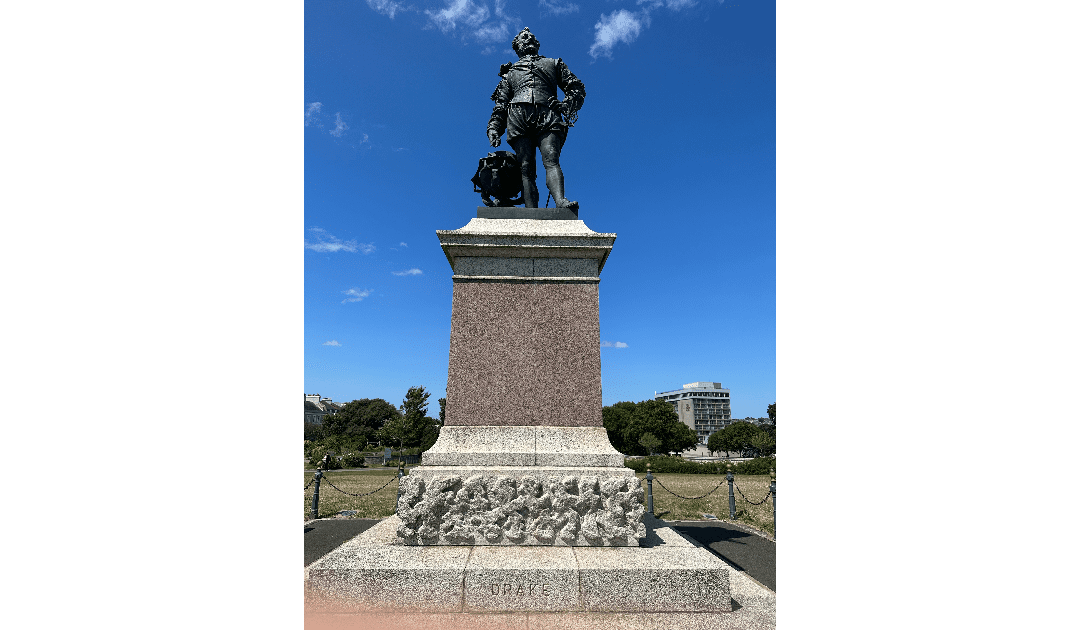The statue of Sir Francis Drake stands on Plymouth Hoe looking out to sea. Drake played bowls while waiting for the Armada. Of course he was probably waiting for the tide too. Actually there were three armadas, but we tend to focus on the first one of 1588. The 2nd Spanish Armada sailed in 1596 and the 3rd sailed in 1597.
I posted recently about the Battle of Trafalgar where the English fleet lost 37 officers. Whilst looking around Plymouth today, I discovered that England lost only one officer to the 1588 Armada, Captain William Cocke.
Sir Anthony Standen provided detailed intelligence to Francis Walsingham on the 1588 Spanish Armada. He also sailed with the Earl of Essex on his expeditions to Cadiz and the Azores in 1596 and 1597. Essex got into considerable trouble for missing both the 2nd and 3rd Spanish Armadas. Storms defeated the 2nd Spanish Armada, but the 3rd Spanish Armada did land men in England and Wales, although not enough to present a great threat.
In my first historical novel, The Spy who Sank the Armada, I cover Sir Anthony’s rather colourful life as an Elizabethan spy and adventurer. I drew on many sources. His entry in the Oxford Dictionary of National Biography provided the main framework. Daphne Du Maurier wrote a wonderful book “The Golden Lads”, about Francis and Anthony Bacon, in which Sir Anthony also features. I read reports of Venetian ambassadors in the British Library and the archive of the Duke of Tuscany for who Standen worked for a while.
From the time that I first learnt about Standen from reading a biography of Sir Francis Drake, I have felt a strong connection with Sir Anthony. My mother’s maiden name was Standen. I was so overjoyed to discover that my 10th great-grandfather was Edmund, his younger brother. I am related to the spy who helped defeat the Spanish Armada.

